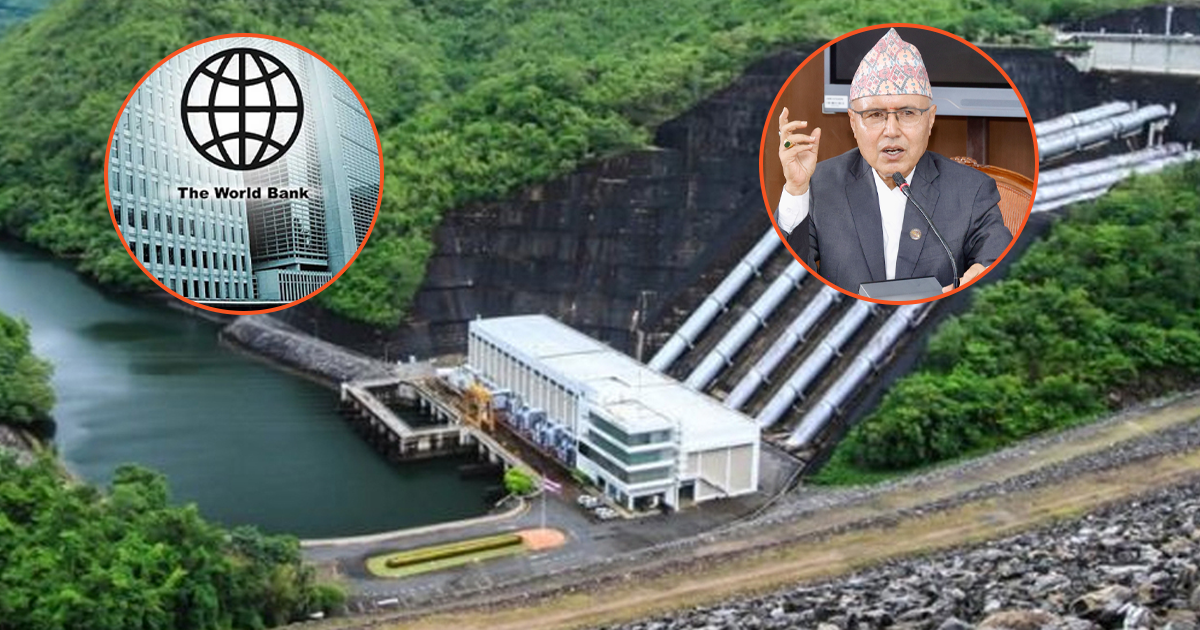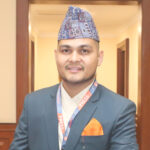Kathmandu: Nepal is preparing to convince the World Bank to return to the 1,061-megawatt Upper Arun Hydropower Project, which the bank had previously withdrawn from.
A delegation led by Finance Minister Rameshore Khanal, currently in the United States, will hold talks with the World Bank’s Managing Director on achieving the project’s financial closure.
According to the Finance Ministry, Minister Khanal’s US visit will include special sideline meetings with the Managing Director of the World Bank, the President of the Asian Development Bank, officials from the International Monetary Fund, and the U.S. Trade Office. Discussions with the World Bank will focus mainly on Upper Arun and Nepal’s investment climate.
To attend the World Bank’s annual meeting, Finance Minister Khanal departed for the US on Saturday along with Nepal Rastra Bank Governor Bishwo Paudel, Finance Secretary Ghanshyam Upadhyay, Foreign Aid Coordination Division Chief Dhaniram Sharma, and NRB’s Research Department Head Ramsharan Kharel, among others.
The World Bank had earlier postponed the financial closure of Upper Arun after India expressed interest in the project and pledged a concessional loan of Rs 130 billion. However, as India later introduced nearly impossible conditions, Nepal is now trying to persuade the World Bank to go ahead with the project independently.
“The Finance Minister will make every effort to convince the World Bank on Upper Arun,” said a ministry source. “If the Bank agrees, this game-changing project will gain real momentum — it would be a huge achievement for Nepal.”
Minister Khanal is known to have strong relations with the World Bank and other major donor agencies.
The Nepal Electricity Authority (NEA) had established Upper Arun Hydroelectric Limited to develop the project on the Arun River. The detailed project report (DPR) has been completed, consultants have been selected, and the plan was to finalize the financial closure under World Bank leadership by mid-2024 (Ashadh 2081 BS).
The project is designed to operate at full capacity for six hours a day during winter. Estimated to cost Rs. 240 billion, construction was expected to begin by 2026 and be completed by 2031.
The powerhouse will be located at Chongrayan, near the confluence of the Arun and Leksuwa rivers. Electricity generated there will be transmitted through a 5.79 km-long, 400-kV double-circuit line to the 400-kV Arun Hub Substation at Haitar, Sankhuwasabha.
The 15th periodic plan identifies this as a “game-changing” national project, first advanced by the government in 2018 (2075 BS).
A pre-feasibility study of Upper Arun was conducted in 1991, with the World Bank providing a US$ 6 million Project Preparation Facility (PPF) loan.
However, it has been a year since progress stalled on financial closure under World Bank leadership. The Bank had postponed the closure date last June (Ashadh 2080 BS) after India claimed development rights to the project. Though a preliminary investment agreement had been reached for June 2024 (Ashadh 2081 BS), the dispute halted progress.
An NEA team led by then-Managing Director (now Energy Minister) Kulman Ghising visited the World Bank headquarters in March 2024 (Chaitra 2080 BS) and secured a commitment of Rs. 120 billion out of the Rs. 130 billion concessional loan initially pledged.
However, as India is a neighbouring country, the World Bank decided it would only proceed after consulting India. India’s state-owned company, Satluj Jal Vidyut Nigam (SJVN) — jointly owned by the central government and Himachal Pradesh — proposed joint development of the project.
The World Bank had planned to form an investment consortium for the project, including the Asian Development Bank, Saudi Fund, and OPEC Fund.
The initial cost estimate of Rs 214 billion has now risen to over Rs 230 billion. Of this, Rs 53 billion was to be raised from domestic banks and financial institutions — an agreement to that effect was signed in August 2022 (Bhadra 2079 BS).
The consortium includes Hydroelectricity Investment and Development Company Limited (HIDCL), Citizens Investment Trust, Rastriya Banijya Bank, and Nepal Bank. A memorandum of understanding (MoU) between Upper Arun Hydroelectric Limited and the consortium members has already been signed.
The project aims to raise Rs 64 billion in equity capital.
Located on the Arun River in Sankhuwasabha, the proposed hydropower project will be semi-reservoir type and capable of peak generation for six hours daily. According to the DPR, commercial operation can begin within 68 months of starting construction, including access road works, which are already well advanced.
Downstream from Upper Arun, India’s SJVN has been awarded the Arun-4 Hydropower Project for joint development with NEA. SJVN has proposed increasing its capacity from 490.2 MW to 630 MW, which would extend the project boundary into the Upper Arun area.
After India’s claim over the Upper Arun overlap, the World Bank hesitated to proceed — and one year has since passed.
As progress stalled, the Finance Ministry decided to make a new effort to persuade the World Bank. “Discussions on Upper Arun have been stuck — they must now move forward,” a ministry source told Clickmandu. Besides Upper Arun, Nepal will also request special assistance from the World Bank for disaster management, especially to respond to heavy rainfall and flooding.
“Declaring an emergency allows us to access additional aid. We declared an emergency in Ilam — the Finance Minister will also discuss that matter,” the source said.
In addition, two more hydropower projects currently in the pipeline will be discussed.
Under a US$ 300 million (Rs 39 billion) budgetary support agreement, Nepal will advance policy reforms in public finance, the financial sector, and green, resilient, and inclusive development (GRID).
There will also be discussions on a joint US$ 300 million World Bank–ADB programme to improve Nepal’s investment climate. Minister Khanal had already held a virtual meeting with representatives of both donor agencies on this issue before Dashain.



Comment Here